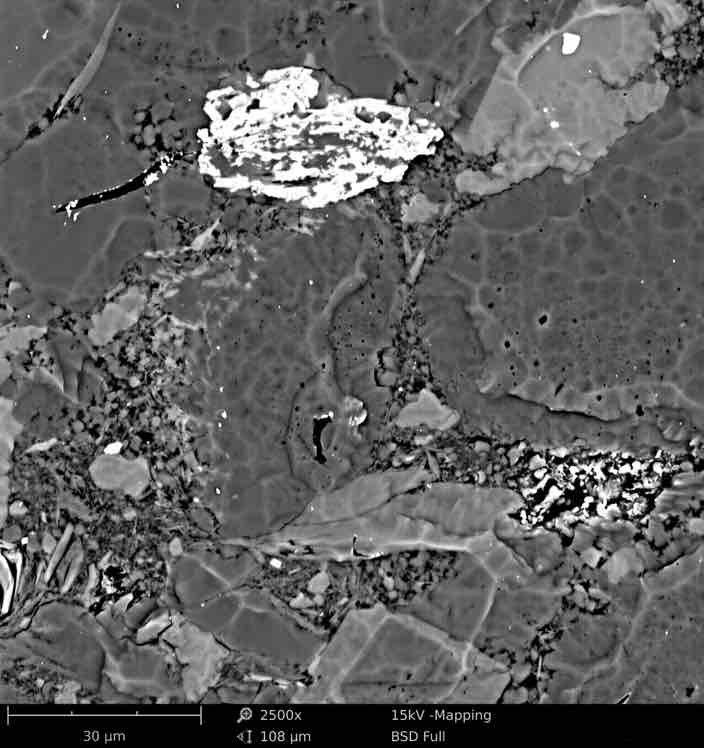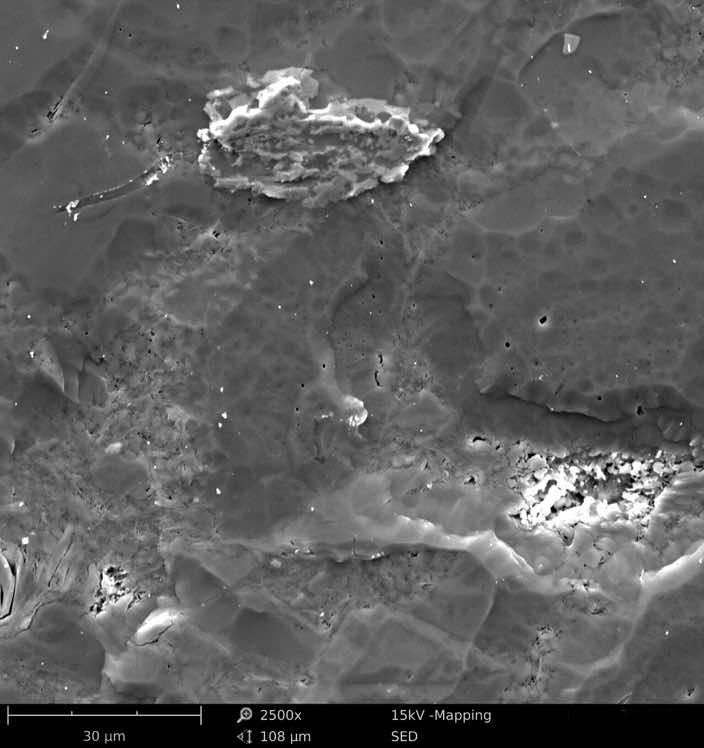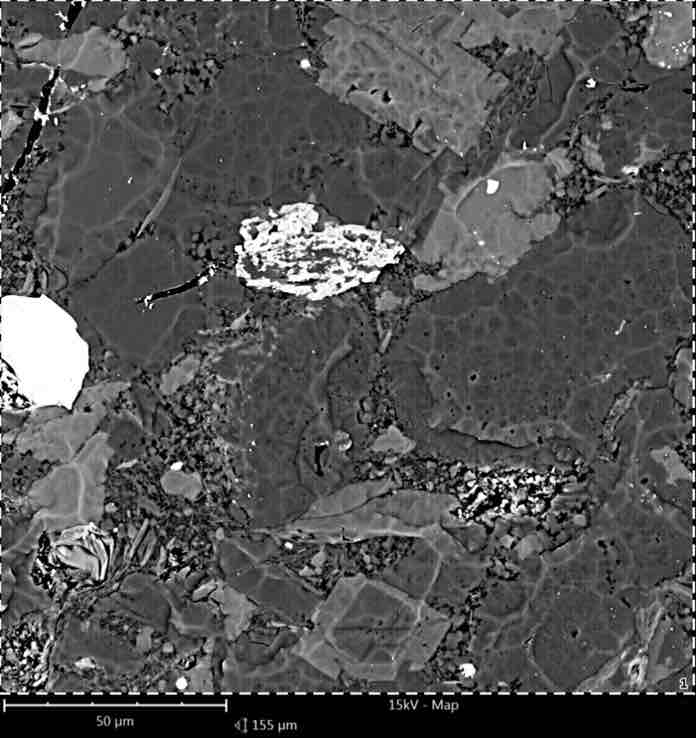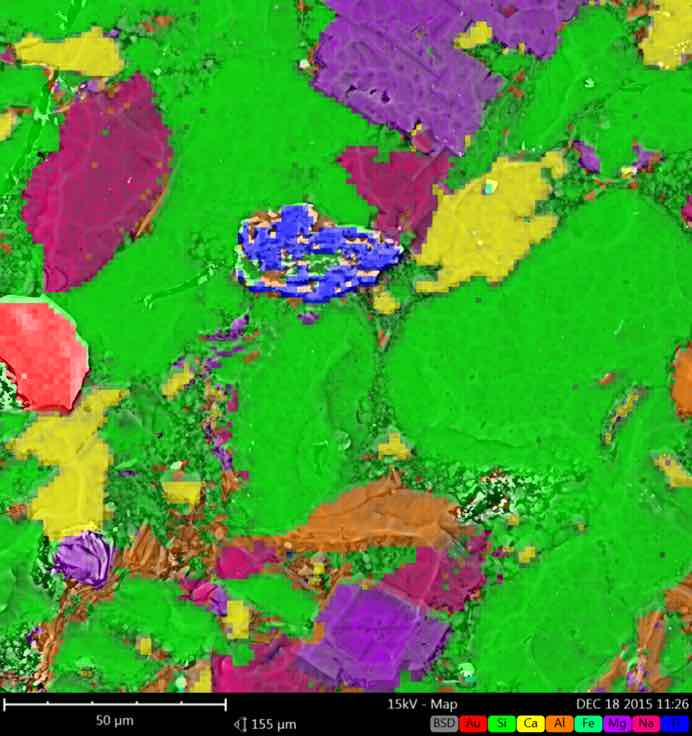Scanning Electron Microscope Additional Signals
Scanning electron microscopy is now a routine technology employed in the study of rocks and minerals. In addition to providing high-resolution images, electron microscopes generate a variety of additional signals that are often employed to further our understanding of geological samples. Chief among these are back-scatter electron detection, secondary electron detection, and energy-dispersive X-ray spectroscopy.
- The intensity of back-scattered electrons (BSEs) is directly proportional to the mean atomic number of the sample. For this reason, BSE detection allows researchers to visualize different phases and grains directly in polished samples. Contrast can be set to distinguish atomic number differences as close as 0.1z. BSE detection further allows for the automated measurement of grain size distributions, nearest neighbor distances, and phase coverage by area.
- Secondary electrons (SEs) arise from the absolute surface of the material and are generally used to study the morphology of 3-dimensional materials. High surface sensitivity also results in enhanced resolution and improved depth of field when compared to a BSE detector.


After different regions of interest have been identified, energy dispersive X-ray spectroscopy can be used to quantify the elemental composition of these phases. At each pixel in the image below, a full X-ray spectrum is acquired, then the pixel is colored according to the highest intensity element.


The Phenom SEM also incorporates an integrated motorized X/Y stage that can be used to acquire and stitch high-resolution mosaics over large regions. These images can be further processed to measure grain size distributions, nearest neighbor distances, and area coverage.
